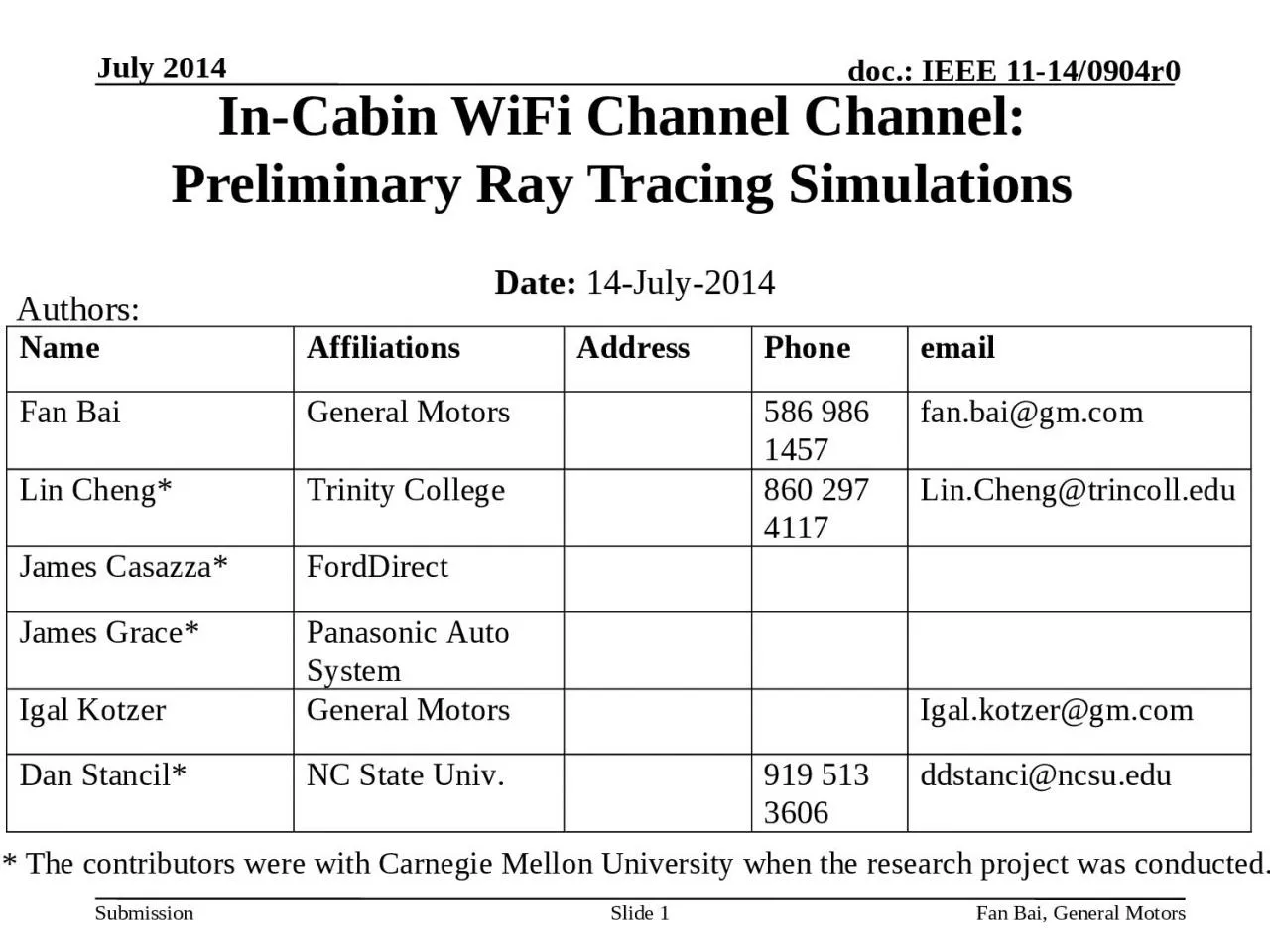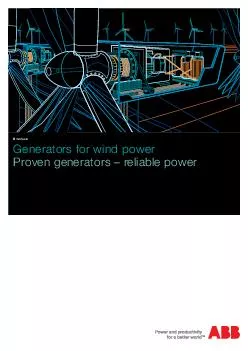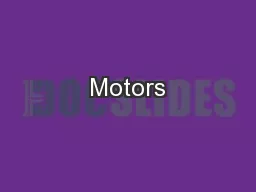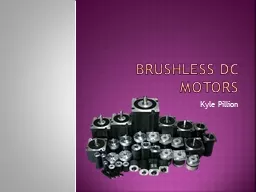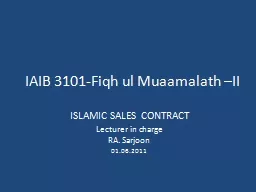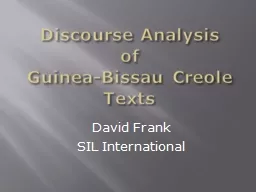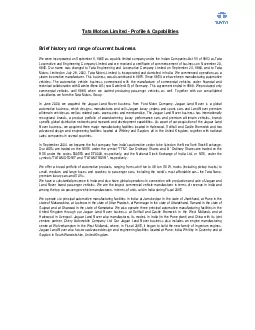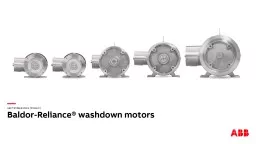PPT-July 2014 Fan Bai, General Motors
Author : natalie | Published Date : 2023-11-08
Slide 1 InCabin WiFi Channel Channel Preliminary Ray Tracing Simulations Date 14July2014 Authors The contributors were with Carnegie Mellon University when
Presentation Embed Code
Download Presentation
Download Presentation The PPT/PDF document "July 2014 Fan Bai, General Motors" is the property of its rightful owner. Permission is granted to download and print the materials on this website for personal, non-commercial use only, and to display it on your personal computer provided you do not modify the materials and that you retain all copyright notices contained in the materials. By downloading content from our website, you accept the terms of this agreement.
July 2014 Fan Bai, General Motors: Transcript
Download Rules Of Document
"July 2014 Fan Bai, General Motors"The content belongs to its owner. You may download and print it for personal use, without modification, and keep all copyright notices. By downloading, you agree to these terms.
Related Documents

